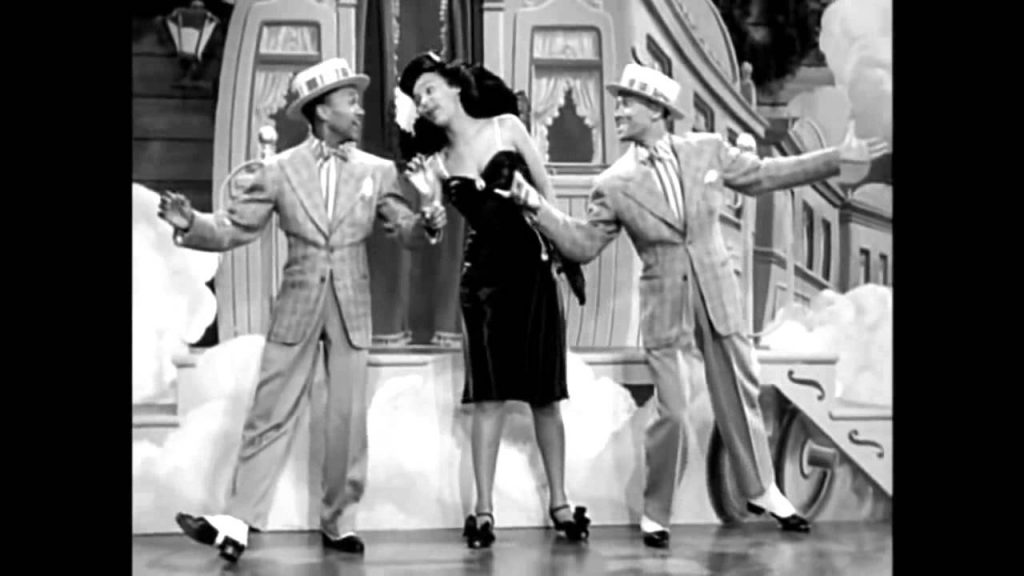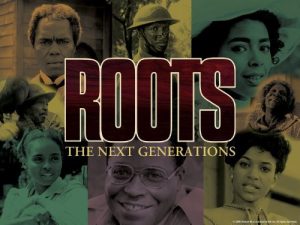It’s the evening of March 30, 1955. It’s the night of the 27th Academy Awards in Hollywood California. The celebrities are arriving in their limousines, and emerging from one of these, herded with blinding flashing lights, is a star. This star, from Cleveland, Ohio, is living out her dream. She has been nominated for the Best Actress award. Tonight, she’s making history. This woman is Dorothy Dandridge, and just for her being nominated, she is making history. Dorothy is the first African-American woman ever to be nominated for this award. And this nomination changed the way Americans thought, at least for that night. That Oscar would look so befitting in her hands. Her photo holding that Oscar from that night would be on every cover of every magazine in the country by the morning. Unfortunately, we never got to see that photo, because Dorothy did not win that night.

Dorothy Dandridge, born on November 9, 1922, first began her start in show business with her sister and another young woman in a musical trio. Once they gathered enough attention, they began performing at the Cotton Club during the 1930s.1 The famed Cotton Club was the dance club based in Harlem, New York where the most popular black singers and dancers performed, such as Cab Calloway and Duke Ellington, and it was where Dorothy Dandridge met her future husband. Here, Dorothy and her trio became so popular that they decided to take their show on tour to England. She finally married her husband, Harold Nicholas, of the Nicholas Brothers. The Nicholas Brothers were a duet who sang and tap danced together. Dorothy and Harold married on September 6, 1942. Dorothy’s marriage to Harold, however, was an unhealthy one, because her trio was receiving more fame than the Harold Brothers, causing tensions between them, and because Harold was also having affairs. But shortly after her marriage, Dorothy became pregnant and gave birth on September 2, 1943, and her baby girl was born brain damaged, due to a lack of oxygen. For the best for the child, Dorothy put her daughter in a private care agency. And after a number of years struggling with Harold and his infidelity, she finally divorced him in 1949.2
Determined to get back on her feet following the divorce, Dorothy decided to begin a solo career as a singer. It is as a singer that she gathered many fans and attention. But Dorothy always had a strong interest in acting. In 1948, when things in her marriage were rocky, she enrolled in The Actor’s Lab, which was the prestigious training school for actors in Los Angeles, California. During the 1940s, The Actor’s Lab trained many future Hollywood stars, including Marilyn Monroe. But during this period in cinematic history, it was hard for a black person to get leading roles on the big screen, especially roles that would change how black people were seen in society in general. In spite of her training at The Actor’s Lab, Dorothy would not get the opportunity to play black characters with strong, complex roles.3
As a black woman at this time in American history, if one wanted to act, one would not be given intelligent or self-respecting roles. The roles black women were given were highly stereotypical, but if acting was ones dream, as it was for Dorothy, she would take those stock roles anyway. After leaving The Actor’s Lab, Dorothy became one of those women who was offered those stock, degrading roles. Her first roles were those that had always been derogatory for black women, such as playing the role of a mistress.4 Such was the case in her films Tamango and Island in the Sun. Those roles were certainly easy for a black woman to portray. And Dorothy would receive roles like this until, finally, she landed a role alongside Harry Belafonte. Dorothy became the lead actress in the 1953 film Bright Road, in which she portrays a school teacher helping the principal, Harry Belafonte, tame their problem students. Her role in the film became a success, and it put Dorothy on the map, and brought her acclaim as an actress. But Dorothy wanted a bigger role. She sought out the lead role as Carmen in the 1954 film Carmen Jones. It was hard for black women to receive self-respecting roles in films, but ironically, in order to get such roles, one must first put on the act of not being self-respecting.5

At first, Dorothy was declined the role of Carmen Jones, and it was only after walking into the audition appearing promiscuous that she was given the role. Carmen Jones is a Broadway musical, but it was turned into a musical film starring an all-black cast, with the likes of Harry Belafonte and Pearl Bailey, and directed by Otto Preminger. Known for bringing any character she portrayed to life with her beauty, charisma, and flirtatious style, the role of Carmen Jones solidified Dorothy’s nomination. Shortly, after getting the role, she was put on the cover of Life Magazine in the same attire she auditioned in. Here Dorothy made history. Dorothy became the first African-American woman to grace the cover of Life. This role also got Dorothy Dandridge an Oscar nomination, becoming the first African-American woman nominated for the Best Actress Award. In 1955, it was hard for a black woman, or black man, to get the respect they deserved from the elite Academy of Motion Picture Arts and Sciences, much less be nominated for one of the most prestigious awards any actor can receive. This nomination was important not only for Dorothy, but for the millions of black men and boys, women and girls, who had the opportunity of watching history unfold, and being given a sense of hope and belief in themselves that they may not have had before those awards began.6
That night was important for America, for the black community, and for Dorothy, even though she did not win. She held her own going against some of the most iconic figures in film that night. The other nominees for the award were Judy Garland, Audrey Hepburn, Jane Wyman, and Grace Kelly. Grace Kelly was the winner of the award for her performance in The Country Girl.7

In Hollywood in 1955, Dorothy Dandridge was a double threat: she was a woman and she was black. Because of this, many opportunities passed her by. She was quoted as saying, “If I were Betty Grable, I could capture the world.” Betty Grable was an American singer, dancer, and actress prominent throughout the 1930s and 1940s. This much was true. Dorothy had much to offer, and it seems absurd today that such a minuscule thing such as race could keep someone from practicing their dream, but this is just what kept Dorothy and others’ dreams undermined. Unlike many, Dorothy Dandridge tackled this arbitrary system of discrimination head on, and she became a star. But she was not allowed to shine as brightly as many of her colleagues.8


After her nomination, Dorothy signed a contract with Twentieth Century Fox, entitling her to three more films. She was established as one of the biggest stars of the time. Unfortunately, Dorothy’s last role was in Preminger’s musical Porgy and Bess. On September 8, 1965 a star had truly fallen. Dorothy’s deceased body was found in her apartment. Decades later she would be reincarnated by Halle Berry in the film Introducing Dorothy Dandridge.9

Plagued by the segregation, sexism, and racism of the times, Dorothy Dandridge could not handle it and succumbed to demise. Hollywood throughout the forties and to the sixties reflected America and its racial tensions. Given the racial inequities of the era, Hollywood was not ready to have many leading roles for black women, and this showed through Dorothy’s career. Dorothy Dandridge inspired many, especially after her death. She broke many barriers for aspiring young black actors internationally. She had a dream, but because of her pigmentation, she was treated differently. Despite these odds, Dorothy was a still a formidable and respected actress. Dorothy was finally noticed as the prolific star she was, by being given an honorary star on the walk of fame on January 18, 1983, in Los Angeles, California.10
- African American Eras: Segregation to Civil Rights Times, 2011, s.v. “Dandridge, Dorothy” (1922–1965). ↵
- Rogers Patrick & Lyndon Stambler, “Overdue notice,” People 48, no. 4 (1997): 89. ↵
- Marguerite H. Rippy, “Exhuming Dorothy Dandridge: the black sex goddess and classic Hollywood cinema,” CineAction, no. 44 (1997): 21. ↵
- Louie Robinson, “The Private World of Dorothy Dandridge,” Ebony 17, no. 8 (1962): 116. ↵
- Cynthia Gorney, “The Fragile Flame of Dorothy Dandridge,” The Washington Post, February 09, 1988. ↵
- Walter Leavy, “The mystery and real-life tragedy of Dorothy Dandridge,” Ebony 49, no. 2 (December 1993): 36. ↵
- Robert K. Lightning, “Dorothy Dandridge: ruminations on black stardom,” CineAction, no. 44 (1997): 31. ↵
- Encyclopaedia Britannica, May 2017, s.v. “Dorothy Dandridge.” ↵
- Erin Anderson, “Dorothy Dandridge: Singer & Actress,” Booklist (2011), 71. ↵
- Ed Guerrero, “Dorothy Dandridge: A Biography,” Cineaste, Vol. 23 Issue 4 (1998): 60. ↵



85 comments
Kimberly Simmons
Very good hook! I immediately was interested in reading after getting through the introductory paragraph, especially after finding out she was African American. Her life story is intriguing – she deserved that Oscar no matter what anyone during that time thought. Just the fact that she was nominated was a great opportunity, and a step in the right direction for racial equality in the arts. Her memory will always live on as a woman who broke barriers.
Monica Avila
The beginning of the story hooked me right away, as the author set the scene at the Academy Awards. Dorothy was obviously a very had worker, she did not let race affect her success. She endured a cheating husband up until
the birth of her daughter which no woman should have to go through. From Times to the Oscars, Dorothy really made an impact and proved her influence.
Miranda Alamilla
Dorothy Dandridge is a truly iconic figure. Not only did she take racism head in the 40s, she had to overcome a cheating, jealous, and selfish husband. Finally, after the birth of her daughter, Dorothy decided to divorce her husband. After her divorce, she really began to blow up. She was the first African American woman on the front of a Times magazine and the African American woman to be in the nominees at the Oscars, nominated for one the most prestigious awards nonetheless. Dorothy was a true inspiration to those who feared chasing their dreams because of race.
Iris Henderson
First, I really loved the imagery and the way that the author set the scene in the beginnning of this article. It was truly captivating. Second, I am sorely disappointed that while I am from NYC and used to live in Harlem and the many times that I passed the Cotton Club, I never visited. Surely, I will be stopping by when I visit the city again. Dorothy’s story is beautiful and heart breaking all at once. She accomplished so much but being racially profiled kept her falling short. It was also terribly sad to learn of her daughters disability.
Kayla Lopez
I have always been the person that wants to watch every award show on TV so it was interesting to find out that Dorothy Dandridge was the first African American female to be nominated for an Academy Award. It was inspiring to know that despite all of the rough circumstances she had to endure, from her daughter’s health to her rocky marriage. She managed to fulfil her dreams despite not winning the award.
Cheyanne Redman
Previously before reading this article, I was not familiar with Dorothy Dandridge. This article really gave much information on who she really was, and how inspirational she is. She broke barriers within the industry, and that isn’t something entirely easy to do. She lasted through much struggle with her family, and her child, and for that her hard work paid off. Although she did not win an Oscar, she did much more to her community within the show business.
Erin Vento
This was a really beautiful article; from the topic to the videos and photos you used. I had never heard of her, but her struggle with trying to find ways to represent and act in roles that aren’t degrading as a woman or to her heritage/race is something that is still expressed by a lot of actors and actresses today. Despite it all, however, her success is inspiring. I certainly won’t forget about her now.
Amanda Perez
I had never heard of Dorothy Dandridge before reading this article but now I will definitely never forget her. A lifetime of trying to make it in show business eventually paid off for her. She powered through so much adversity with her unhealthy child and unfaithful husband but she still prevailed and although she did not win her Oscar, she proved so much to the African American community.
Matthew Rios
A very good article Aaiyanna, good job. I had never known who Dorothy was. Normally I don’t particularly care for Hollywood’s drama and personal theatrics, but in light of recent events its nice to have a decent thing to read about it nowadays. I suppose it’s fair to be asking for some equal and fair representation in that business. I think the most important thing though is sheer talent. I suppose in her case, it might not have been fair and square. Then again there’s no evidence to suggest otherwise.
Ernie Sano
Honestly, great article! I thoroughly enjoyed reading and learning about Dorothy Danaridge. The name is familiar to me, but I never really knew exactly who she was. I had heard about the Harlem Renaissance in U.S. history class and her name circulated around. Ms. Danaridge was part of a larger cultural movement that highlighted the growing social impact that African Americans would place in the world. It’s a tragedy she died young, but I’m glad her talents were recognized. Great read!